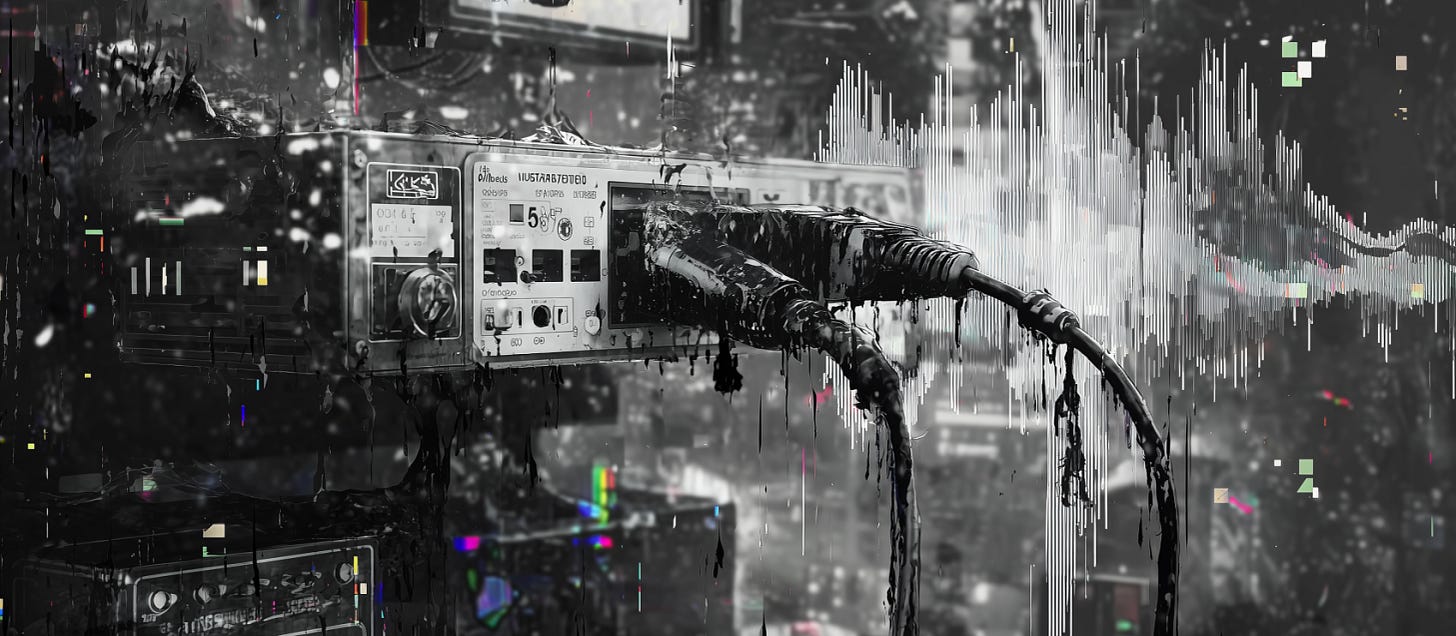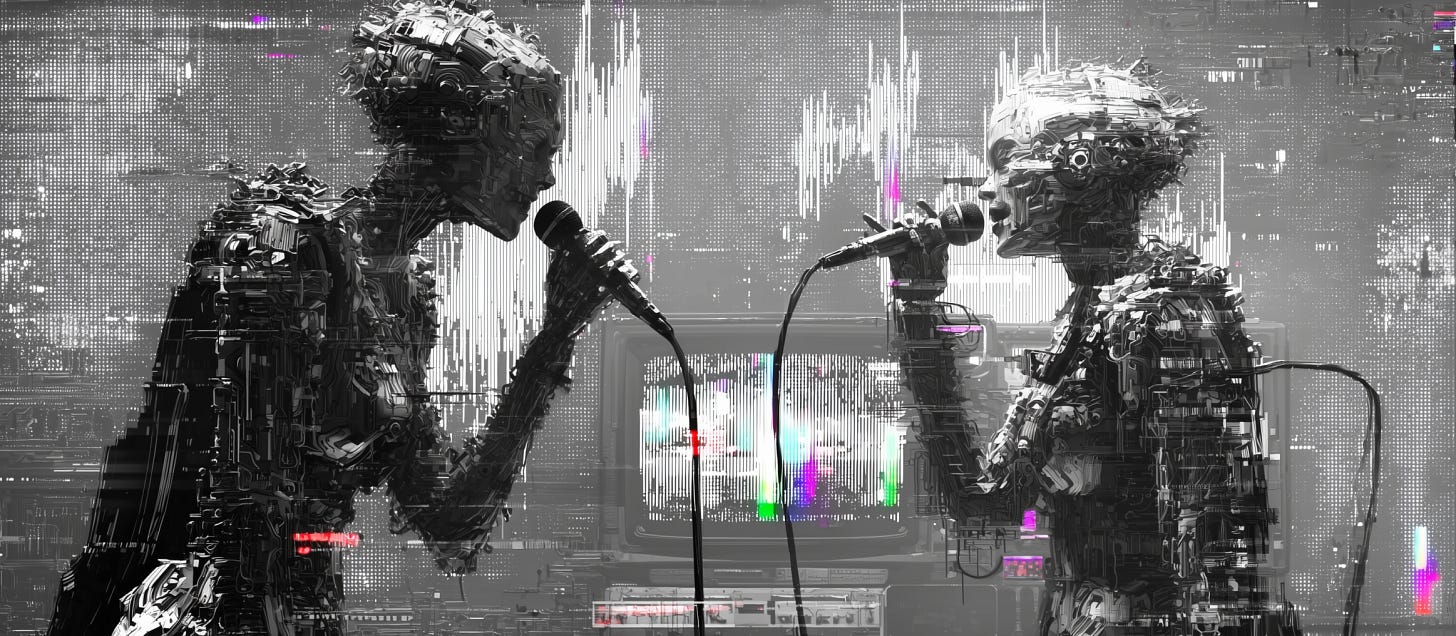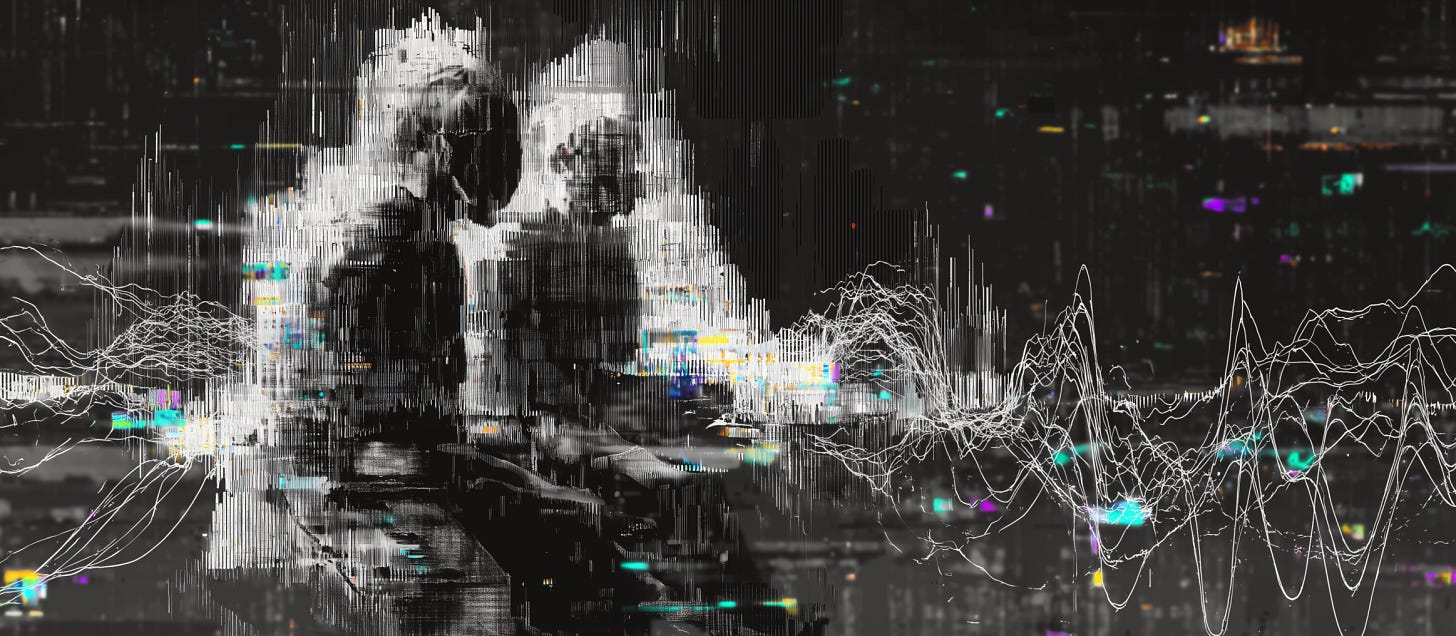The Internet Sang to Us
Dial-up's forgotten, unforgettable ritual and its lesson for cyborg design.
Dial-Up
If you’re a child of the 90s or early 00s, you can probably hear it vividly.
Picture this: you’re about to hijack the only home phone line. Maybe you even kick your big sister off a call. You hit “Connect” on AOL and there it is: the sound of the internet arriving.
Machine-elf chatter. Beeps, errs, brrs. Warbles. Hiss. Static. The soundtrack of an era, etched into collective memory. Meanwhile, your sister in the next room is already yelling that you just cut her off mid-sentence.
// auditory UX: nostalgia protocol engagedThat unforgettable “Dial-Up” sound has a name you probably never knew: Frequency Shift Keying.
The Song Beneath the Static
It’s more than nostalgia. FSK literally sang information into the line.
When you hit connect, your modem dialed your ISP’s modem. And they talked.
That song wasn’t background noise. It was the communication itself, carried in the voice-band (300–3400 Hz), the same slice of spectrum as human speech because the system repurposed lines already tuned for voice.
The sequence was a handshake: an introduction, a negotiation, and an agreement. Something like:
“I’m a modem attached to a human. You’re the traffic controller. Let’s trade IDs, agree on the terms, and open the pipe.”
FSK works by shifting tones: one frequency for 0, another for 1. Multi-level FSK adds more notes, letting modems “hum” whole words.
// signal == messageWhy bother with a song? Because frequency cuts through noise better than volume. On messy lines full of static, tone survives. Think Nokia ringtones slicing through a noisy bar, or jingles that burrow into your brain. FSK is a melody engineered for survival.
Anatomy of The Ritual
For the curious (and the nerdy), here’s the anatomy of the sound. Like a good DJ, a 56k modem handshake layers FSK, Phase Shift Keying (PSK), and a few amplitude (volume) tweaks into a ritual of alignment between two machines:
Step 1 – Carrier tone (~1 kHz–2 kHz)
A piercing test tone. One modem says: “Lock onto me. This is our anchor.” Like a tuning fork before the song.
// alignment ritual: beginStep 2 – Probing (chirps, sweeps, rising/falling tones)
Quick machine voices. “Can you hear me here? How about now?” A long flat beep clears echoes: “Silence, please—we’re talking.”
Step 3 – Capabilities exchange (chirps, R2D2 banter)
Two astromechs nervously introduce themselves.
“I can do 28.8 kbps.”
“I can do 56k with compression.”
They align on dialect.
Step 4 – Training (descending warbles)
Viscous swoops sliding down. A calibration test: pseudo-random sequences probing the quirks of this particular line. Like a sound engineer: “Check, one two.”
Except instead of a guy mumbling into a mic, it’s R2D2 on a slide whistle.
Step 5 – Sync (call-and-response beeps)
The most memorable part. Two distinct tones ping back and forth:
“You hear me?”
“I hear you.”
Timing and phase lock in. Without it, bits drift into chaos.
Step 6 – Silence
The sound stops, but the data begins. The toll is paid; the on-ramp opens. From here on out, you’re no longer a listener, you’re a user.
The handshake was a ritual of alignment. A tuning fork, a birdsong, a training drill, a call-and-response, and then quiet. A fleeting negotiation that carried no evidence once the line went silent.
// the internet sang to usThat’s what compels me. These little sonic artifacts laid the foundation of how we felt the internet: fragile, noisy, alive. A culture encoded in tones now mostly forgotten, but unforgettable.
Other Dialects
While dial-up is gone, FSK and its siblings, PSK and ASK, still hum beneath our tech, each tuned to its own niche.
FSK is the song of the internet. Sometimes audible, often ultrasonic, it still powers hospital pagers, Caller ID, garage doors, key fobs. And in noisy environments—satellites, marine radios—FSK thrives because tone cuts through static.
PSK (Phase Shift Keying) is subtler. The backbone hum of modern connectivity. Instead of changing pitch, it shifts where the wave starts. Efficient and resilient, PSK underpins early Wi-Fi standards (BPSK, QPSK), 3G/4G cellular cores, and satellite links that stretch across impossible distances.
ASK (Amplitude Shift Keying) is the ancestor—the on/off flicker at the root of it all. AM radio is ASK at scale. Today it lives in RFID tags and cheap remotes. Want to see it? Point a TV remote at your phone’s camera. The IR pulses flicker visibly on screen. That’s amplitude shift.
Every Interface Has Its Handshake
Different schemes for different niches. But together they remind us: every connection is a handshake.
Dial-up let us hear it. Today, PSK and ASK run silent, woven into the wireless ether. You don’t hear the negotiation anymore but you feel it. A tap-to-pay that lags, a Face ID that misfires, a Wi-Fi that drops at the wrong moment. These are still handshakes, still rituals of alignment.
That’s the cyborg condition in miniature: tools aren’t neutral. They teach us timing, rhythm, fluency. When the handshake works, it vanishes. When it stutters, it jolts us.
So the lesson is this: designing and defining interfaces isn’t just about data transfer. It’s about building trust in the loop— the feeling between memory and machine, between body and code.
// end transmissionMore from Signal+Static
If this resonated, check out these connected transmissions:
Pilot Mode — on cockpit design and what it means to trust your instruments.
Obsessive Interfaces — on the love (and obsession) we give to everyday tools.
Glossary: From the Loop — living definitions of cyborg design language.




